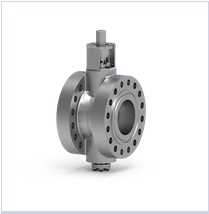Apr-2006
Residue desulphurisation and conversion
The current market forces that presage a boom in resid hydrotreatment are examined along with recently reported progress in technology
Cécile Plain and Eric Benazzi, Axens
Denis Guillaume, IFP
Viewed : 19427
Article Summary
Whether the objectives are to prepare FCC feeds or to produce more diesel and low-sulphur fuels, the hydrotreatment of atmospheric and vacuum residues is a priority for many refiners. These priorities predicate an examination of current market incentives to increase hydrotreating capacity. In addition, fixed-bed hydrotreaters are used as an example of recent technological advances that reinforce the value of this bottom-of-the barrel process.
Strong market incentives
The current wave of refining investment will increase the number of residue desulphurisation and conversion units. There are many reasons for this, including fierce competition for crude oil supplies; available feedstocks becoming heavier and higher in sulphur content; declining share of residual fuel oil in the global refinery product slate; strong growth in the demand for distillate; and strong across-the-board demand for low-sulphur fuels. Cheaper feeds provide better margins for those who can process them.
As crude oil supply tightens due to strong demand, crude prices have increased to over $60 per barrel. Using the Brent price as a reference (Figure 1), high-sulphur fuel oil (HSFO) loses significant value compared to ultra- and low-sulphur fuel oil (ULSFO and LSFO). This is even truer for diesel motor fuel. The large price differential makes it attractive to hydrotreat or convert HSFO into lighter materials.
At the same time, refineries equipped with complex configurations that are able to process heavy and very heavy feedstocks (Maya, Dubai, Urals and Iranian Heavy) have some significant operational advantages. Contracts for these feeds can be $6–18/bbl lower than the cost of Brent (Figure 2). It is unlikely crude oil prices will return to $35/bbl in the foreseeable future, so the light-heavy differential will likely remain above conversion technology investment criteria. In contrast to previous experience, it is time to concentrate on the OPEX side of the refinery equation (feedstock costs) rather than focus solely on the CAPEX (investments) costs.
The steadily rising demand for diesel fuel and continually softening demand for fuel oils is a solid driver for additional conversion technology (Figure 3). To squeeze the maximum out of a barrel of feedstock and add flexibility, residue conversion is a highly attractive option.
A third factor to add to the equation is that fuel oil sulphur content is on a decidedly downward trend. Demand is shifting from HSFO to 1 wt% LSFO and 0.5 wt% ULSFO. There is even significant demand for 0.3 wt% sulphur fuels in some Asian markets. The ability to produce LSFO or ULSFO instead of HSFO is an advantage enjoyed by some refineries, but not all.
The drawback to high-sulphur crude feedstocks is the capital investment required to produce low-sulphur products. However, as the sweet-to-sour feedstock spread increases, operating costs can be much lower. Furthermore, the conversion of additional heavy material to diesel is even more attractive, as previously seen in Figure 1.
Fixed-bed resid hydrotreater performance
Fixed-bed atmospheric and vacuum resid hydrodesulphurisation units (AR/VRDS or RDS), in addition to cleaning up FCC feedstocks, convert about 20% of the feedstock to diesel and enable the production of higher volumes of gasoline. FCC feed pre-treating also limits FCC catalyst ageing by eliminating metals that cause deactivation. Optimal performance of the hydrotreater contributes significantly to the refinery margin. Based on commercial experience, the use of advanced RDS technology, in addition to the latest- generation resid catalysts, provides a major economic advantage to operations. Recent technological developments provide the commercial rationale for the implementation of advanced resid upgrade technology, including the permutable reactor system.
Permutable reactor system
The permutable reactor system (PRS) is a safe, proven and cost-effective solution to increasing the RDS on-stream factor. With PRS, the RDS unit processes additional barrels of heavy feed on an annual basis. At a time when operating levels are high, this provides a feedstock debottleneck without having to increase the use of more expensive crudes. Why implement a PRS on an existing RDS unit? PRS is the most advanced guard system that can be implemented on an existing or new train. The small guard reactors protect the HDS section from the heavy feedstock impurities that lead to premature shutdowns due to pressure drop build-up and to catalyst deactivation of the downstream reactors. This means that the HDS section of the train runs longer and with fewer shutdowns, saving on costly change-out operations and prolonging the useful life of the large volume of HDS catalysts
RDS unit shutdowns during FCC operation are costly. When heavy FCC feedstocks are not pre-treated, the FCC unit product distribution is negatively impacted (less gasoline), product quality suffers (sulphur content increases) and catalysts must be replaced at a higher rate (metal poisoning). PRS provides much improved demetallisation performance, which enables the use of substantial quantities of low-cost VR feeds and decreases the FCC catalyst replacement rate. In a conventional fixed-bed unit, the guard reactor provides the hydrodemetallisation (HDM) function that protects the downstream HDT reactors, as seen in Figure 4.
The feed to conventional fixed-bed RDS units contains asphaltenes, metal compounds, cracked material and sediment, which, depositing in the bed, limit run lengths to a few months. The upstream reactor is the first to undergo bed plugging and catalyst deactivation. In a substantial number of cases, units are shut down due to pressure-drop limitations well before the catalyst cycle length is due to end.
Add your rating:
Current Rating: 4

















